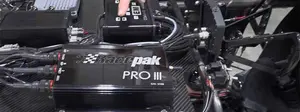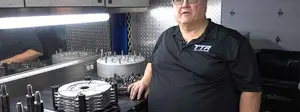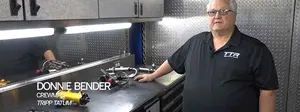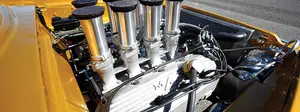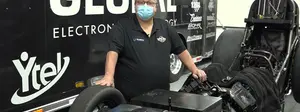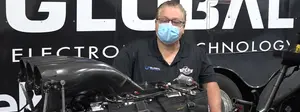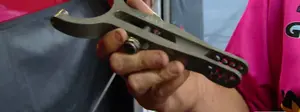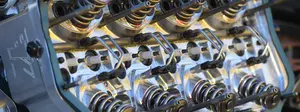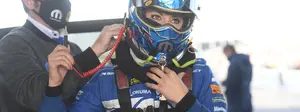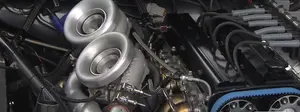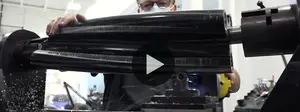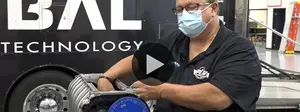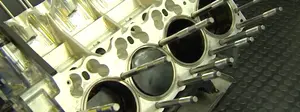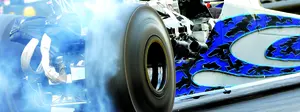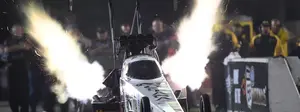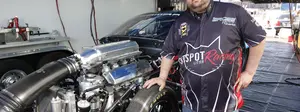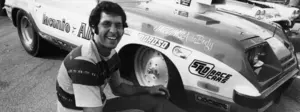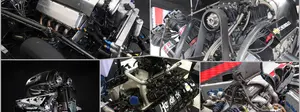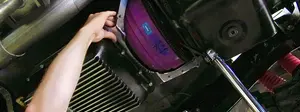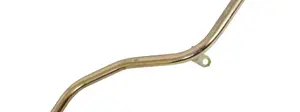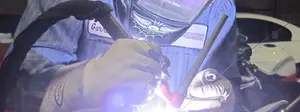

Survive the Drive: Having the right tie-downs is key to keeping your race car secure
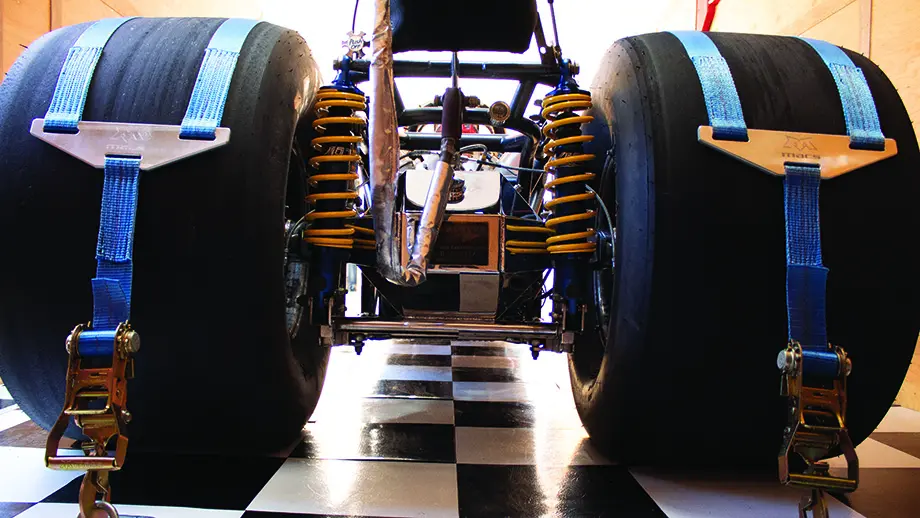
You head straight to the garage or shop every day after work. Late night after late night. Countless hours ensuring your dragster is prepped and ready for a pass that will take only seconds. Your i’s are dotted, and your t’s are crossed. Now imagine all that hard work being for naught because you didn’t even make it to the track. You missed crossing one “t” on the list: tie-downs.
Often, damage during transport due to load shifting can be linked to poor tie-down execution. Whether the straps are simply old and worn, they’re not routed properly due to insufficient anchor points, or that they are just not built to withstand the weight of the vehicle. This led Colin McLemore, founder and owner of Mac’s Tie Downs, to create tie-down solutions to fill the gap left by generic, big-box store options.
After more than 25 years in the industry, McLemore continues to come across bad (and good) tie-down situations. Whether you’re securing a dragster, your daily driver, an off-road vehicle, or all of your gear/cargo, the tie-down possibilities are endless. That’s why proper education is so crucial in order to be prepared for whatever it is you are hauling.
There are many schools of thought when it comes to proper tie-down usage. As McLemore often says, “Our recommendations are just that … recommendations. Every tie-down situation is different depending on the vehicle, trailer, and anchor points.” So, what are the misconceptions and general rules when it comes to proper tie-down execution?
Weight is Key
One significant misconception is regarding the vehicle’s static weight and the required Minimum Breaking Strength (MBS) to keep it in place. In this example, the static weight of the vehicle is 3,000 pounds. One might assume that a 5,000-pound capacity tie-down strap would suffice—incorrect. As a rule, a tie-down strap should be rated for three times the vehicle’s static weight. Therefore, a 3,000-pound vehicle needs a minimum 9,000-pound capacity tie-down strap.
Sprung or Unsprung
Where the tie-down is attached to the vehicle is extremely important. Tie-downs should always be routed around an unsprung component, such as the rear-end housing. Not only are these components significant enough to handle the load from a tie-down, they do not compress and rebound as the vehicle travels over bumps. Attaching tie-downs to a sprung component will cause the strap to lose tension, ultimately leading the non-safety-style hook to come detached when the suspension compresses. Additionally, attaching to a sprung portion of the vehicle unnecessarily shocks both the tie-down assembly and the vehicle itself.

Protect Important Components

Keeping the dragster still during transit is extremely important. The bumps on the road can put unnecessary strain and abuse on not only the chassis itself but suspension components, like shocks, springs, and seals. Having an additional piece of support under the chassis is an easy way to keep it still; even if you simply use a 2 by 4 with padding.
If you want support built just for the job, products like Mac’s Chassis Stabilizer are developed specifically to keep the chassis and its vital components from unnecessary movement. Manufactured with a proprietary heavy-duty elastic rubber compound, Mac’s Chassis Stabilizer is available in two shapes: round or rectangular. Their low profile can be positioned under the lowest vehicle and then inflated to the desired height.
To Track or Not to Track

In some cases, a trailer is used exclusively to transport the dragster, which is secured in the same position every time. But what if your trailer has multiple uses and requires the versatility of anchor points in different locations, depending on what is being hauled?
If that’s the case, tracks can be an integral part of your tie-down package. Various profiles, such as surface mount or recessed, are available to give your trailer a professional look. The key aspect is that you have the flexibility of multiple anchor points to secure whatever you are transporting.
Tie-Downs for What You Haul

On race night, your trailer isn’t just hauling your dragster. A lot of equipment and ancillary items are necessary at the track so you can be ready for anything. Things like a nitrogen cylinder, pit cart, and toolbox, to name a few. These items deserve the same tie-down TLC that your dragster receives. The last thing you need to deal with when you arrive at the track is to open the trailer door and find nothing is where it was when it left home.
It’s a great idea to have a set of 1-inch tie-down straps available. They are extremely versatile and can be customized to fit your specific use. Having tie-downs that are purpose-built for your important cargo make packing up the trailer after the races simple.
Straps versus Nets

As mentioned previously, every tie-down situation is different. Aside from traditional tie-down straps that secure to a substantial part of the vehicle’s chassis, tire nets are built to cradle the tire and secure directly to an anchor point on the trailer. This allows the vehicle’s suspension to work as designed, absorbing the bumps of the road. Be sure that your tire nets are custom-built to your specific wheel to ensure the perfect fit.
The most important thing to remember is safety. Whatever product you choose, be sure that whatever you’re hauling is secure. If you aren’t sure, call an expert or visit the manufacturer website.
SOURCES
Mac's Custom Tie-Downs Inc.
1.800.666.1586
Mac's Custom Tie-Downs Inc.
























